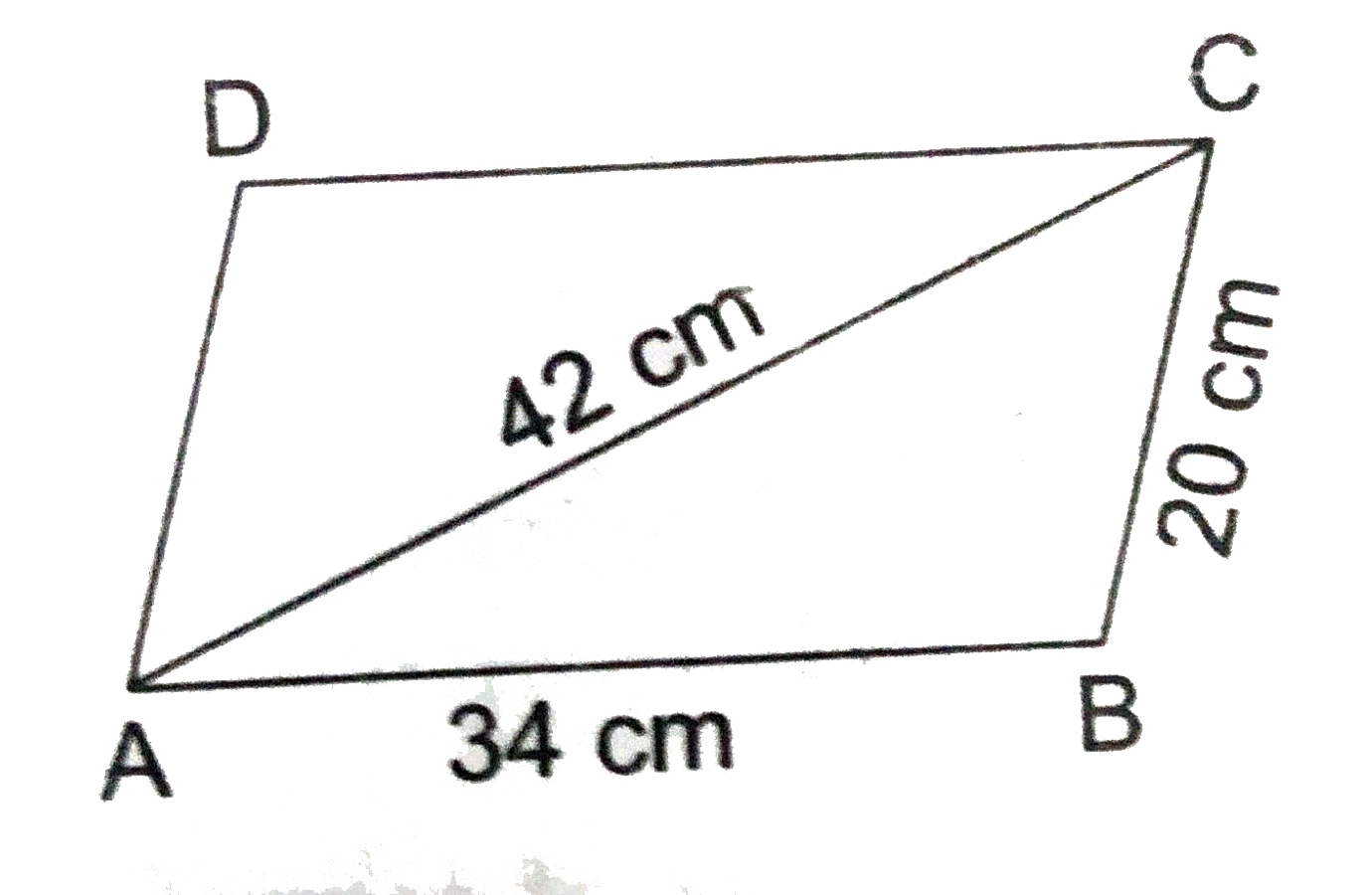The two sides of the parallelogram ABCD are 6 cm and 4 cm. The heightcorresponding to the base CD is 3 cm (Fig 11.19). Find the(i) area of the parallelogram. (ii) the height corresponding to the base AD.
To solve the problem step by step, we will find the area of the parallelogram and then the height corresponding to the base AD.
Step 1: Find the Area of the Parallelogram
The formula for the area of a parallelogram is given by:
Area=Base×Height
In this case, we will take base CD which measures 6 cm and the corresponding height is 3 cm.
Substituting the values into the formula:
Area=6cm×3cm=18cm2
Step 2: Find the Height Corresponding to Base AD
Next, we need to find the height corresponding to the base AD. The length of base AD is given as 4 cm. Since the area of the parallelogram remains the same regardless of which base and height we use, we can set up the equation:
Area=Base AD×Height corresponding to AD
Let the height corresponding to base AD be h. Therefore, we can write:
18cm2=4cm×h
Now, we will solve for h:
h=18cm24cm=4.5cm
Final Answers:
(i) The area of the parallelogram is 18cm2.
(ii) The height corresponding to base AD is 4.5cm.
---
The formula for the area of a parallelogram is given by:
Area=Base×Height
In this case, we will take base CD which measures 6 cm and the corresponding height is 3 cm.
Area=6cm×3cm=18cm2
Next, we need to find the height corresponding to the base AD. The length of base AD is given as 4 cm. Since the area of the parallelogram remains the same regardless of which base and height we use, we can set up the equation:
Area=Base AD×Height corresponding to AD
Let the height corresponding to base AD be h. Therefore, we can write:
18cm2=4cm×h
h=18cm24cm=4.5cm
(i) The area of the parallelogram is 18cm2.
(ii) The height corresponding to base AD is 4.5cm.
Topper's Solved these Questions
- BOOK - NCERTCHAPTER - PERIMETER AND AREAEXERCISE - EXERCISE 11.28videos
PERIMETER AND AREA
- BOOK - NCERTCHAPTER - PERIMETER AND AREAEXERCISE - EXERCISE 11.48videos
PERIMETER AND AREA
- BOOK - NCERTCHAPTER - LINES AND ANGLESEXERCISE - SOLVED EXAMPLES1videos
LINES AND ANGLES
- BOOK - NCERTCHAPTER - RATIONAL NUMBERSEXERCISE - SOLVED EXAMPLES6videos
RATIONAL NUMBERS
Similar Questions
The two sides of the parallelogram ABCD are 6 cm and 4 cm. The heightcorresponding to the base CD is 3 cm (Fig 11.19). Find the(i) area of the parallelogram. (ii) the height corresponding to the base AD.
View SolutionTwo adjacent sides PS and RS of the parallelogram PQRS are 6 cm and 12 cm respectively. The height corresponding to the base RS is 5 cm. Find (i) the area of the parallelogram PQRS and (ii) the height corresponding to base PS.
View Solution
Knowledge Check
- Question 1 - Select One
Two adjacent sides of a parallelogram are 21 cms and 20 cms. The diagonal joining the end points of these two sides is 29 cms. The area of the parallelogram (in sq. cms) is
A240B120C210D420
Find the area of a parallelogram with base 32 cm and height 16.5 cm.
View SolutionWhat is the area of the parallelogram whose base is 5 cm and corresponding height is 6 cm?
View SolutionThe adjacent sides of a parallelogram ABCD measure 34 cm and 20 cm , and the diagonal ac measures 42 cm . Find the area of the parallelogram
 View Solution
View SolutionThe area of a parallelogram whose base is 6cm and height 3cm is:
View SolutionFind the area of a parallelogram with base 5 cm and altitude 4.2 cm.
View SolutionFind the area of a parallelogram with base 8 cm and altitude 4.5 cm.
View SolutionFind the area of a parallelogram whose base is 8.5 cm and height 4 cm .
View Solution
